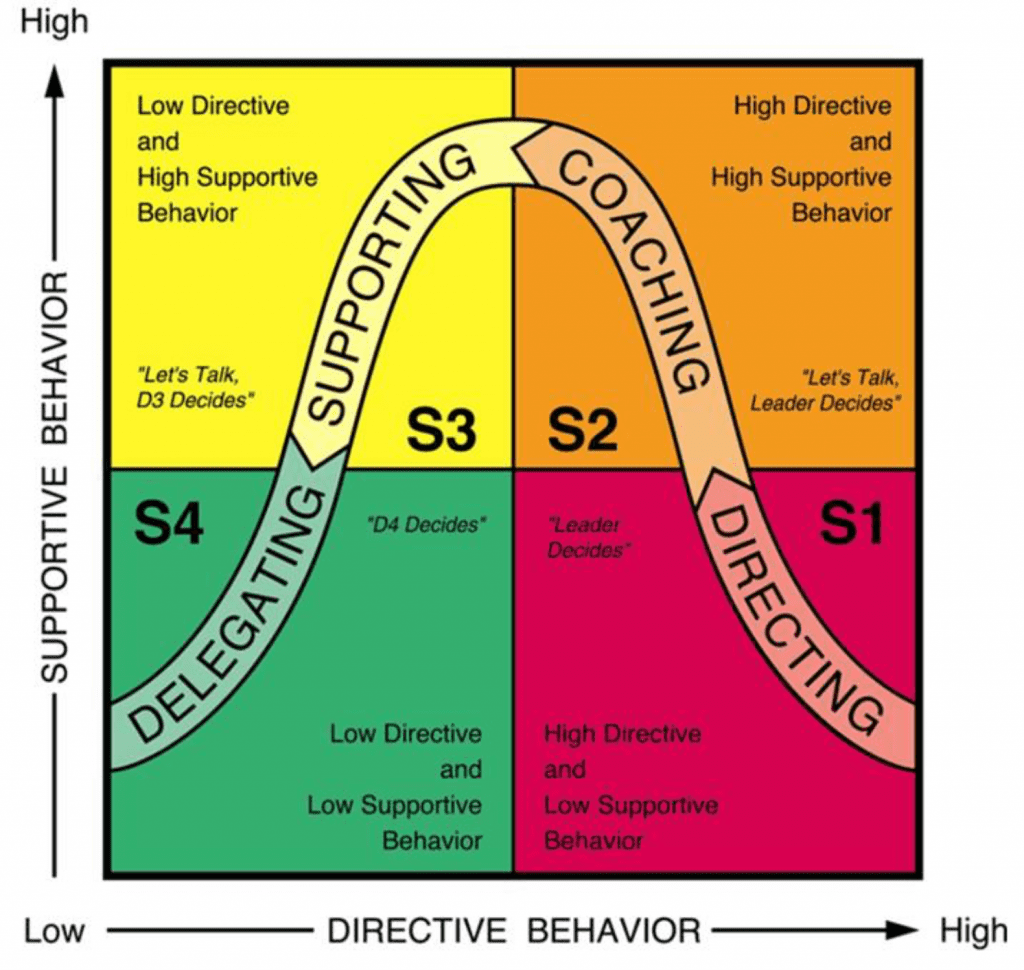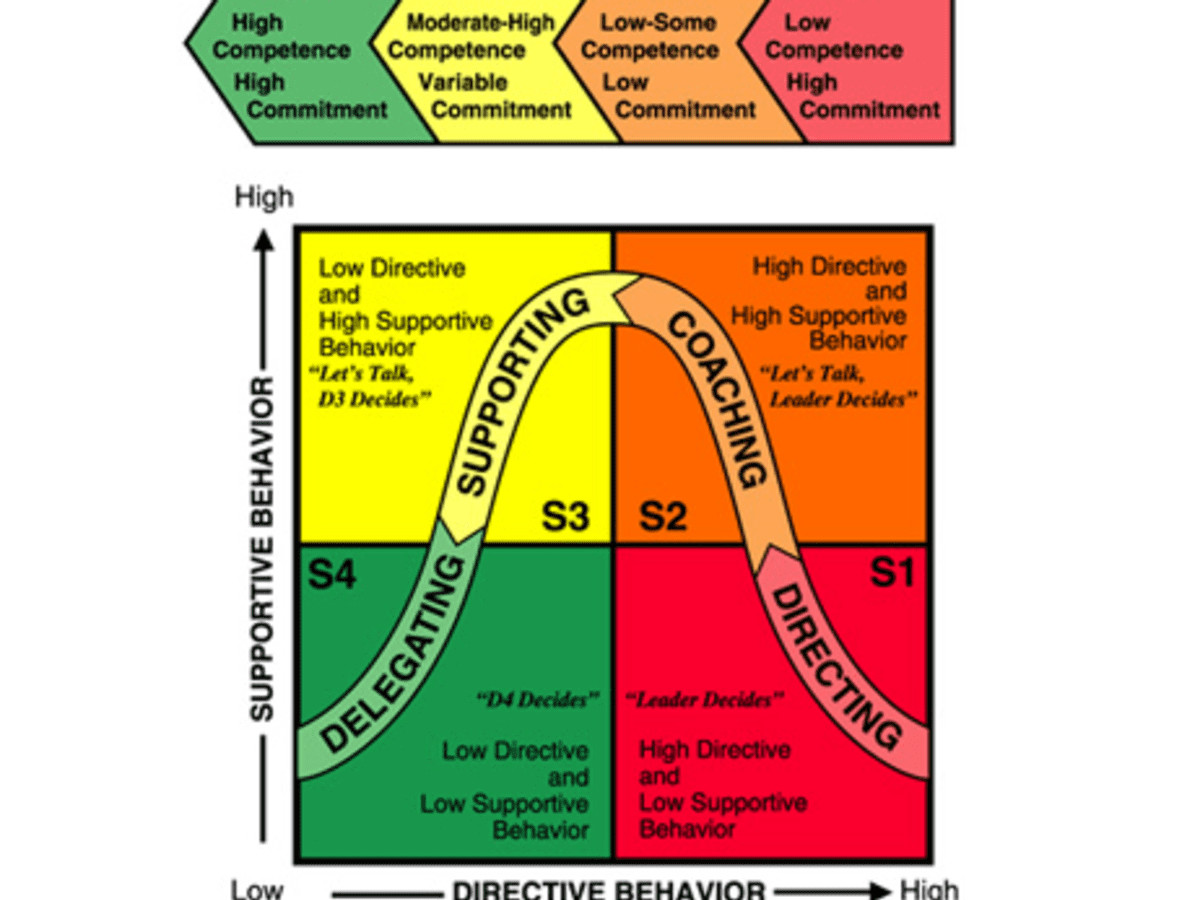Embark on a transformative journey with situational leadership certification, a comprehensive program designed to elevate your leadership skills and empower you to navigate diverse workplace dynamics. Discover the nuances of this dynamic leadership approach, master the art of adapting your style to varying situations, and reap the rewards of enhanced team performance and career advancement.
As we delve into the intricacies of situational leadership, you’ll gain a deep understanding of its principles, leadership styles, and practical applications. Explore the benefits of certification, learn how to choose the right program, and witness real-world examples of its successful implementation.
Join us on this enlightening journey and unlock the key to becoming an exceptional leader.
Situational Leadership Model Overview

Situational leadership is a leadership theory that suggests that the most effective leadership style depends on the maturity of the followers.
The situational leadership model was developed by Paul Hersey and Ken Blanchard in the 1960s. They identified four leadership styles and four levels of follower maturity.
Leadership Styles
The four leadership styles are:
- Telling: The leader provides clear instructions and closely supervises followers.
- Selling: The leader provides clear instructions but also seeks input from followers.
- Participating: The leader shares decision-making with followers.
- Delegating: The leader gives followers the authority to make decisions.
Follower Maturity, Situational leadership certification
The four levels of follower maturity are:
- M1: Followers are unable and unwilling to take responsibility.
- M2: Followers are unable but willing to take responsibility.
- M3: Followers are able but unwilling to take responsibility.
- M4: Followers are able and willing to take responsibility.
Matching Leadership Styles to Follower Maturity
The most effective leadership style depends on the maturity of the followers.
For example, a telling leadership style is most effective for M1 followers, while a delegating leadership style is most effective for M4 followers.
Situational Leadership Certification Programs

Various situational leadership certification programs are available, each with its unique benefits and drawbacks. The choice of the most suitable program depends on individual needs and goals.
Situational leadership certification can help you become a more effective leader by teaching you how to adapt your leadership style to the specific needs of your team and the situation. If you’re looking to take your leadership skills to the next level, consider enrolling in a thought leadership program.
These programs can help you develop the skills and knowledge you need to become a thought leader in your field and inspire others to follow your lead. And once you’ve completed a thought leadership program, you’ll be well-positioned to earn your situational leadership certification.
Certification programs typically cover the fundamentals of situational leadership, including the model’s principles, tools, and applications. They also provide opportunities for participants to practice and apply their learning through simulations, case studies, and other interactive exercises.
Obtaining situational leadership certification can enhance your leadership skills and advance your career. For those seeking a solid foundation in IT leadership, the IT Leadership Foundations – D370 course offers a comprehensive curriculum covering key principles, strategies, and best practices.
By understanding the situational leadership model and applying it to your work, you can become a more effective and adaptable leader in any IT environment.
Criteria for Selecting a Certification Program
- Program Accreditation:Ensure the program is accredited by a reputable organization, such as the International Coaching Federation (ICF) or the Center for Leadership Studies.
- Program Length and Structure:Consider the duration and structure of the program, ensuring it aligns with your time availability and learning style.
- Program Content:Evaluate the program’s curriculum to ensure it covers the essential aspects of situational leadership and provides practical applications.
- Instructor Qualifications:Research the credentials and experience of the instructors to ensure they are experts in situational leadership.
- Cost and Return on Investment:Consider the program’s cost and the potential return on investment in terms of career advancement and leadership effectiveness.
Benefits of Situational Leadership Certification

Situational Leadership certification offers a range of advantages for individuals seeking to enhance their leadership skills and career prospects.
By obtaining certification, leaders gain a comprehensive understanding of the Situational Leadership Model and its practical application in various workplace scenarios. This knowledge empowers them to adapt their leadership style to the specific needs and developmental levels of their team members, fostering a positive and productive work environment.
Enhanced Leadership Skills
- Improved ability to diagnose follower maturity levels
- Enhanced capacity to adapt leadership style to suit individual needs
- Increased confidence in guiding and motivating team members
Career Advancement
- Recognition as a certified situational leader
- Increased marketability and competitiveness in the job market
- Greater opportunities for leadership roles and responsibilities
Case Study
A study conducted by the Center for Creative Leadership found that certified situational leaders were 25% more effective in developing their team members and achieving organizational goals compared to non-certified leaders.
Application of Situational Leadership in Practice

Situational leadership is a versatile approach that can be applied in various settings. It empowers leaders to adapt their leadership style to the specific needs of their followers, resulting in improved team performance and employee satisfaction.
To better understand how situational leadership is applied in real-world scenarios, let’s explore some practical examples:
Challenges and Opportunities
- Identifying Follower Development Level:Accurately assessing the follower’s development level can be challenging, especially when working with diverse teams.
- Adapting Leadership Style:Continuously adjusting leadership style to match the follower’s development level requires flexibility and self-awareness from the leader.
- Building Trust:Establishing a strong foundation of trust is crucial for successful situational leadership implementation. Followers need to feel valued and supported to be receptive to different leadership styles.
- Resistance to Change:Some followers may resist changes in leadership style, especially if they are accustomed to a particular approach. Overcoming this resistance requires effective communication and support.
Best Practices and Tips
- Use a Structured Model:Implement a clear and well-defined situational leadership model to guide decision-making.
- Provide Ongoing Feedback:Regularly provide feedback to followers on their performance and development, helping them understand their strengths and areas for improvement.
- Foster a Learning Environment:Create an environment that encourages learning and development, providing opportunities for followers to grow and progress.
- Seek Input from Followers:Involve followers in the decision-making process to increase their buy-in and commitment.
- Be Patient and Consistent:Changing leadership styles takes time and effort. Stay patient and consistent in your approach, adapting as needed based on feedback and observations.
Future Trends in Situational Leadership: Situational Leadership Certification

As the business landscape continues to evolve, situational leadership theory and practice are adapting to meet the demands of the modern workplace. Emerging trends in technology, globalization, and research are shaping the future of situational leadership.
One significant trend is the increasing use of technology to support situational leadership. Virtual collaboration tools, data analytics, and artificial intelligence (AI) are providing leaders with new insights into their followers’ needs and preferences. This information can help leaders tailor their leadership style to each individual, even in remote or distributed work environments.
Obtaining a situational leadership certification is a valuable asset for educational leaders. This certification provides a framework for understanding and adapting leadership styles to meet the needs of different situations, improving effectiveness in managing educational teams and organizations. By exploring the principles of situational leadership in the context of educational management administration and leadership , educators can enhance their ability to motivate and guide students, staff, and stakeholders.
Globalization
Globalization is another major force influencing the application of situational leadership. As businesses operate across borders and cultures, leaders need to be able to adapt their leadership style to different cultural norms and expectations. Situational leadership provides a framework for leaders to understand and respond to the diverse needs of their followers from various cultural backgrounds.
Research and Development
Ongoing research and development in the field of situational leadership are also contributing to its evolution. Researchers are exploring new models and approaches to situational leadership, such as the use of adaptive leadership and transformational leadership. These advancements are helping leaders to become more effective in managing complex and dynamic work environments.
Final Conclusion

In conclusion, situational leadership certification empowers you with the tools and knowledge to lead effectively in any situation. By mastering the art of adapting your leadership style to the maturity level of your team, you can foster a positive and productive work environment, drive innovation, and achieve remarkable results.
Embrace the transformative power of situational leadership and embark on a path of continuous growth and leadership excellence.
Detailed FAQs
What are the benefits of situational leadership certification?
Situational leadership certification enhances your leadership skills, improves team performance, increases job satisfaction, and opens up career advancement opportunities.
How do I choose the right situational leadership certification program?
Consider factors such as program reputation, curriculum, certification requirements, and cost to select the program that best aligns with your goals and needs.
What are the challenges of applying situational leadership?
Challenges include accurately assessing team maturity, adapting your leadership style effectively, and overcoming resistance to change.